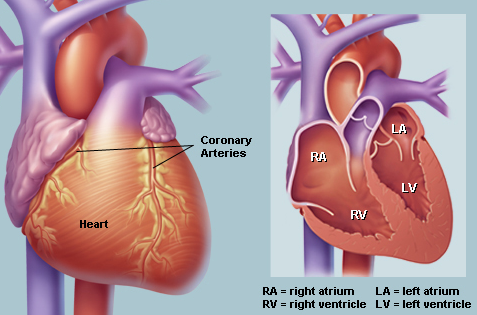Will testosterone make women happier?
Jane Fonda gave a candid interview three years ago in which she admitted that her sex life needed some artificial help and she had been taking testosterone to boost it, from the age of 70. She attributed her youthful looks and happy demeanor to a healthy love life. “If you want to remain sexual and your libido has dropped, taking a small dose of the libido-boosting hormone testosterone makes a huge difference,” she said.
Evidence that women can also become testosterone-deficient is largely ignored. Only levels of the “female” hormones progesterone and estrogen were thought to be important for a woman’s health and well-being. But many experts now believe that it’s the loss of testosterone, not estrogen, that causes women in midlife to gain weight, feel fatigue and lose mental focus, bone density and muscle tone.
Many women reaching menopause are scared off by the belief that hormone replacement therapy (HRT) can cause breast cancer. In 2002 a Women’s Health Initiative study in the United States was halted when researchers noticed an unexpectedly high rate of breast cancer among older women taking HRT. This alarming finding frightened millions of women, and their doctors, away from hormone therapy at menopause.
A decade later, medical professionals agreed that the 2002 findings were flawed and hormone replacement therapy is not as risky as once believed. Unfortunately, many women still believe hormone replacement is not safe and, too often, uninformed GPs advise women against taking HRT. Controlled studies show that slightly increasing testosterone levels in aging women can restore libido, increase arousal and the frequency of sexual fantasies. Low testosterone levels in women of all ages is a key factor in female sexual dysfunction, especially diminished desire and libido. Administering a low dose of testosterone has also been shown to improve mood and overall well-being.
 That message may now be playing in a theater near you, so consider skipping the super size drink at the concession stand.
That message may now be playing in a theater near you, so consider skipping the super size drink at the concession stand. There are signs that the critics of sugar may soon be moving from contrarian to mainline status: the upcoming U.S. Dietary Guidelines are expected to take a much harsher stand against added sugars. It appears that the medical establishment is no longer standing naked in Times Square.
There are signs that the critics of sugar may soon be moving from contrarian to mainline status: the upcoming U.S. Dietary Guidelines are expected to take a much harsher stand against added sugars. It appears that the medical establishment is no longer standing naked in Times Square. Neil Goodman, MD, FACE; Andre Guay, MD, FACE; Paresh Dandona, MD, PhD, FACE; Sandeep Dhindsa, MD; Charles Faiman, MD, MACE; Glenn R. Cunningham, MD
Neil Goodman, MD, FACE; Andre Guay, MD, FACE; Paresh Dandona, MD, PhD, FACE; Sandeep Dhindsa, MD; Charles Faiman, MD, MACE; Glenn R. Cunningham, MD New research suggests that taking vitamin D supplements can help women to significantly increase their muscle strength and reduce the loss of muscle mass for at least 12 years after menopause. Dr LM Cangussu, from the Botucatu Medical School at Sao Paulo State University (Brazil), and colleagues conducted the double-blind, placebo-controlled trial over a nine-month period. Muscle mass was estimated by total-body DXA (dual energy X-ray absorptiometry), as well as by handgrip strength and through a chair-rising test. Results showed that women receiving the supplements exhibited a significant increase (+25.3%) in muscle strength at the end of the study, whereas those assigned to a placebo actually lost an average of 6.8% of muscle mass. Women not receiving Vitamin D supplements were also nearly two times as likely to fall. “We concluded that the supplementation of Vitamin D alone provided significant protection against the occurrence of sarcopenia, which is a degenerative loss of skeletal muscle,” said Cangussu.
New research suggests that taking vitamin D supplements can help women to significantly increase their muscle strength and reduce the loss of muscle mass for at least 12 years after menopause. Dr LM Cangussu, from the Botucatu Medical School at Sao Paulo State University (Brazil), and colleagues conducted the double-blind, placebo-controlled trial over a nine-month period. Muscle mass was estimated by total-body DXA (dual energy X-ray absorptiometry), as well as by handgrip strength and through a chair-rising test. Results showed that women receiving the supplements exhibited a significant increase (+25.3%) in muscle strength at the end of the study, whereas those assigned to a placebo actually lost an average of 6.8% of muscle mass. Women not receiving Vitamin D supplements were also nearly two times as likely to fall. “We concluded that the supplementation of Vitamin D alone provided significant protection against the occurrence of sarcopenia, which is a degenerative loss of skeletal muscle,” said Cangussu. Cangussu LM, Nahas-Neto J, Orsatti CL, Dias FB, Schmitt EB, Nahas EA. A randomized study on the effect of vitamin D3 supplementation on skeletal muscle function in fallers postmenopausal women. Abstract presented at the North American Menopause Society Annual Meeting 2015. 30th September – 3rd October, 2015. Las Vegas, United States of America.
Cangussu LM, Nahas-Neto J, Orsatti CL, Dias FB, Schmitt EB, Nahas EA. A randomized study on the effect of vitamin D3 supplementation on skeletal muscle function in fallers postmenopausal women. Abstract presented at the North American Menopause Society Annual Meeting 2015. 30th September – 3rd October, 2015. Las Vegas, United States of America.
 Among his primary findings: Many older adults are capable of pursuing high-intensity workouts well into later life. Put simply, “to be fast, one needs to train fast,” Mr. Friel says.
Among his primary findings: Many older adults are capable of pursuing high-intensity workouts well into later life. Put simply, “to be fast, one needs to train fast,” Mr. Friel says.
